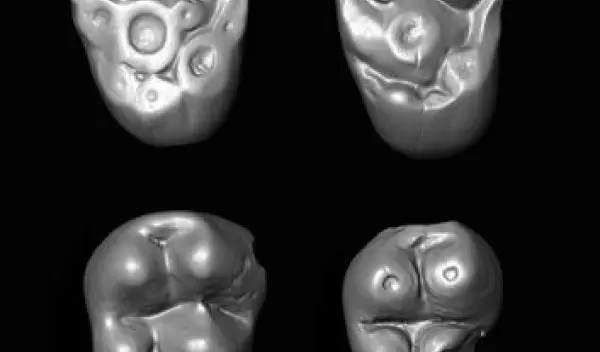
Ancient teeth from Peru hint that now-extinct monkeys crossed the Atlantic from Africa
Four fossilized monkey teeth discovered deep in the Peruvian Amazon provide new evidence that more than one group of ancient primates journeyed across the Atlantic Ocean from Africa, according to work by USC researchers published in Science. The National Science Foundation provided funding support for the research.
The teeth are from a newly discovered species belonging to an extinct family of African primates known as parapithecids. Fossils discovered earlier at the same site in Peru offered the first proof that South American monkeys evolved from African primates.
The monkeys are believed to have made the trip of more than 900 miles on floating rafts of vegetation that broke off from coastlines, possibly during a storm.
Researchers have named the extinct monkey Ucayalipithecus Perdita. The name comes from Ucayali, the area of the Peruvian Amazon where the teeth were found, pithikos, the Greek word for "monkey," and Perdita, the Latin word for "lost."
Ucayalipithecus Perdita would have been very small, similar in size to a modern-day marmoset.
Based on the age of the site and the closeness of Ucayalipithecus to its fossil relatives from Egypt, researchers estimate the migration might have occurred around 34 million years ago, during a time when sea level fell, which, said USC's Erik Seiffert, the study's lead author, "might have played a role in making it a bit easier for these primates to actually get across the Atlantic Ocean."
Two of the Ucayalipithecus Perdita teeth were identified by Argentinean co-authors of a 2015 study showing that New World monkeys had African forebears. When Seiffert was asked to help describe these specimens in 2016, he noticed the similarity of the two broken upper molars to an extinct 32 million-year-old parapithecid monkey species from Egypt he had studied previously.
An expedition to the Peruvian fossil site in 2016 led to the discovery of two more teeth belonging to this new species. The resemblance of these additional lower teeth to those of the Egyptian monkey teeth confirmed to Seiffert that Ucayalipithecus was descended from African ancestors.


